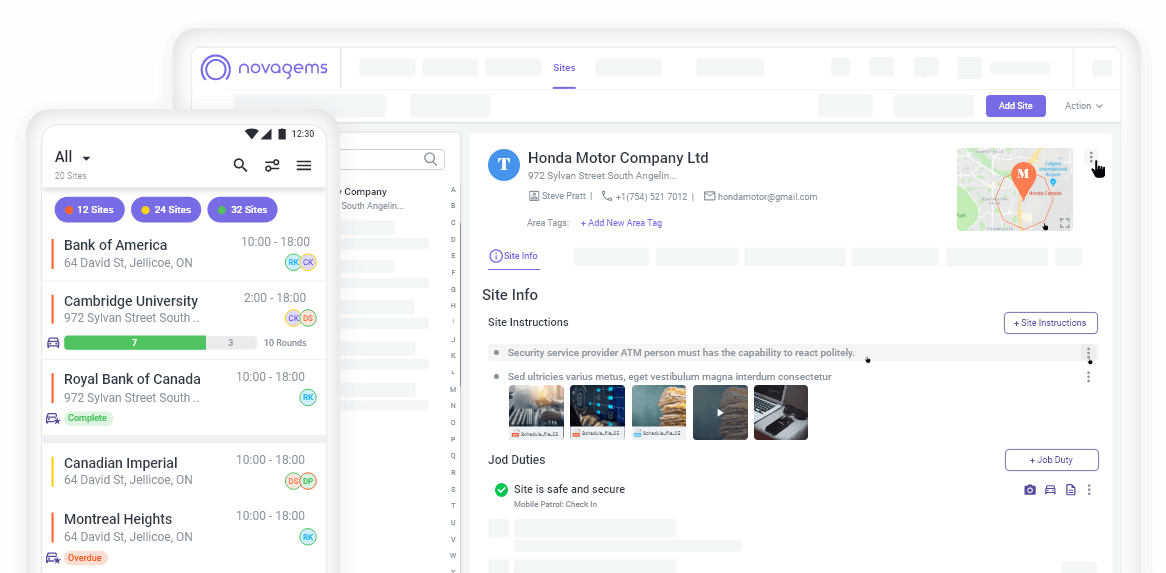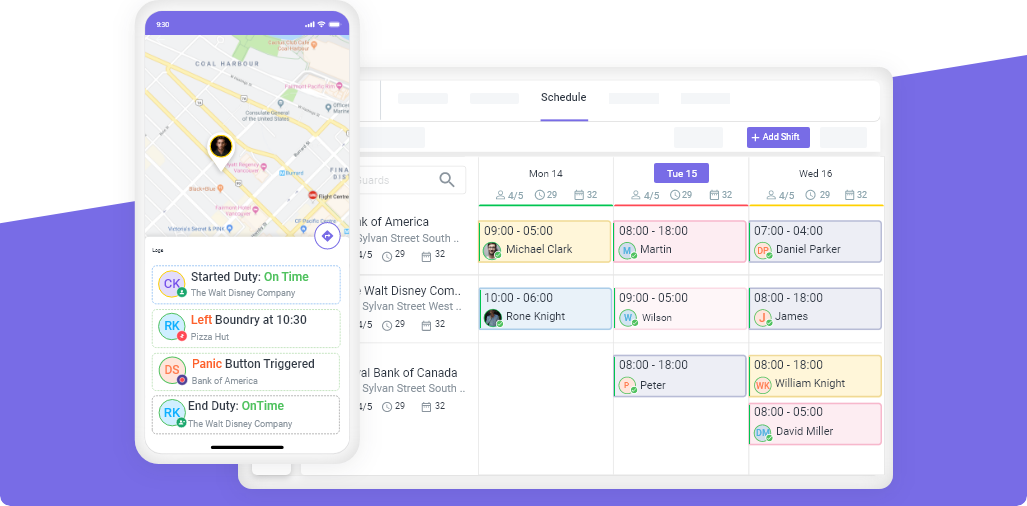Importance of Workforce Management in Healthcare
Wed, Mar 12, 2025
Read in 13 minutes
Workforce management in healthcare is important to run your facility smoothly. With 24/7 operations, balancing staff schedules, and complex regulations, effective workforce management is essential.

Key Takeaways:
- Workforce management in healthcare is critical to improving staffing efficiency, patient care, and employee engagement.
- Effective staff scheduling in healthcare, predictive analytics, and automation play a central role in optimizing healthcare operations.
- By streamlining workforce management, healthcare organizations can reduce labor costs, improve patient outcomes, and enhance staff satisfaction.
- Healthcare workforce management systems ensure compliance with industry regulations and help reduce burnout and turnover rates.
- AI in workforce management is revolutionizing the way healthcare providers manage their workforce, offering smarter staffing solutions.
Workforce management in healthcare means planning and organizing healthcare staff - such as doctors, nurses, therapists, and support workers—to make sure patients receive the best possible care. It is more than just deciding who works on which days. It also involves matching each role’s skill level to specific patient needs, staying within budget, and following healthcare rules. When done well, good workforce management keeps both patients and employees happier, lowers costs, and improves safety. In this blog, we will look at the key parts of workforce management in healthcare, why it is important, common challenges, and how new tools like scheduling software can improve processes. We will also include ideas about a staff schedule, using a remote workforce, and other healthcare solutions that help meet changing patient needs.
What is Workforce Management in Healthcare?
Workforce management in healthcare refers to the process of planning, scheduling, and managing healthcare staff to ensure efficient operations. This includes everything from creating optimal schedules for nurses, doctors, and other staff, to ensuring compliance with labor laws and maintaining quality patient care. Effective workforce management helps healthcare organizations deliver better service, improve employee satisfaction, and control costs.
In healthcare, the stakes are higher than in most industries because workforce efficiency directly impacts patient care and hospital performance. As the healthcare industry evolves, so must its workforce strategies—incorporating advanced technology to streamline staffing, scheduling, and management.
Key Aspects of Workforce Management in Healthcare
1. Careful Planning and Forecasting
Healthcare facilities see different numbers of patients throughout the year. For example, flu season can bring more people to clinics and hospitals in the winter. By looking at patient data from past years and following local health trends, healthcare managers can forecast how many employees they will need in the future. This allows them to create a staff schedule that avoids having too few workers during busy times or too many workers when it is quiet.
Why It Matters:
- Stops staff burnout by balancing workloads.
- Cuts costs by avoiding unneeded overtime.
- Helps leaders know when to hire new workers or offer extra shifts to current staff.
2. Making the Right Staff Schedule
An efficient staff schedule means putting the right person in the right place at the right time. This takes into account things like skill level, patient needs, and staff preferences. For instance, a nurse who is trained in intensive care is more suited to work in a critical unit than one who is not. At the same time, staff who have personal or family obligations may need flexible shifts. Balancing these factors leads to a smoother workplace and better care for patients.
Why It Matters:
- Improves patient safety by ensuring skilled workers are present when needed.
- Boosts employee morale by allowing fair and flexible work hours.
- Reduces staff turnover, saving time and money on hiring and training.
One of the most powerful tools in modern healthcare workforce management is predictive analytics. These systems use historical data to forecast staffing needs based on factors such as patient volume, hospital admissions, and even seasonal trends. By leveraging AI in workforce management and data analytics, healthcare providers can anticipate demand and adjust staffing levels in advance, reducing inefficiencies and ensuring that adequate resources are available at all times.
3. Following Healthcare Regulations
Hospitals and clinics must follow rules about staffing. For example, there might be laws that state a nurse can only care for a certain number of patients at once. Some rules also cover licenses and certifications for healthcare professionals. If these licenses are not kept up to date, the facility can face legal trouble or lose its accreditation.
Why It Matters:
- Keeps patients safe by guaranteeing staff members have the correct training.
- Protects the healthcare organization from fines and other penalties.
- Builds trust with patients, showing that the facility follows proper guidelines.
4. Employee Engagement and Retention
Healthcare jobs can be stressful. Doctors, nurses, and other caregivers deal with sick or injured people every day. They often work long shifts and must remain focused. If workers feel unsupported or overworked, they are more likely to leave for another job. High turnover can harm patient care because it takes time for new staff to adjust and learn about the facility’s processes.
Why It Matters:
- Lower costs because less money is spent on hiring and training new workers.
- Maintains team stability, which supports better communication and patient care.
- Improves employee well-being, which can reduce errors and increase patient satisfaction.
5. Tracking Performance
Hospitals and clinics can track certain numbers or metrics to see how well they are managing their staff. For instance, they can look at how many overtime hours were used each month. They can also measure patient feedback, employee satisfaction, and the number of patient falls or infections. If overtime suddenly goes up, managers might need to adjust the staff schedule or hire new employees.
Why It Matters:
- Helps identify problems early, such as understaffing or unhappy employees.
- Shows where the facility can improve, like adding more training or changing schedules.
- Measures success over time and helps managers set realistic goals.
6. Real-Time Scheduling and Flexibility
Real-time scheduling capabilities allow healthcare managers to adjust shifts and assignments as needs change, whether due to sudden demand, emergencies, or staff absenteeism. Flexibility in scheduling not only helps meet patient needs but also supports staff well-being by offering them more control over their shifts.
7. Automation for Improved Efficiency
Automating tasks such as scheduling, reporting, and compliance tracking not only reduces the administrative burden on healthcare managers but also ensures consistency and accuracy. Automation also allows managers to track real-time performance, allowing for quick adjustments and decisions.
8. Employee Engagement and Retention Tools
An effective workforce management system includes features that promote employee engagement and help reduce turnover. Tools that allow for feedback collection, employee recognition, and career development are essential for maintaining a motivated and committed healthcare workforce.
Why Effective Workforce Management Matters
1. Better Patient Care
In healthcare, having the right number of skilled employees can make a difference in patient outcomes. If a department has too few staff, patients might wait longer for care, leading to worse results. With good workforce management, patients can be seen quickly by qualified professionals, which often leads to faster recovery times and fewer mistakes.
The quality of patient care is directly impacted by the efficiency of the healthcare workforce. With an optimized workforce management system, healthcare organizations can ensure that qualified staff are always available at the right times. This reduces staffing shortages and minimizes wait times, ultimately leading to improved patient satisfaction and outcomes.
2. Cost Savings
Labor costs are one of the largest expenses for healthcare providers. When a facility is short-staffed, it must pay overtime to cover open shifts. If it schedules too many staff members when patient numbers are low, it wastes money. Proper planning and the use of scheduling software help control labor costs and keep the budget balanced.
Healthcare providers face significant challenges in managing their workforce due to the complexity of staffing needs, varying shifts, and the importance of having the right number of staff at all times. An effective workforce management system ensures that healthcare facilities are always staffed adequately while avoiding overstaffing, which can lead to unnecessary costs. By automating staff scheduling, hospitals and clinics can optimize their operations, freeing up time for administrators to focus on patient care.
3. Compliance and Safety
Following rules and guidelines keeps healthcare facilities safe and trustworthy. Mistakes in staffing, like letting an unlicensed worker see patients or ignoring staff-to-patient ratio rules, can lead to legal action or harm to patients. Good workforce management systems track license renewals, required training hours, and scheduling limits to avoid such problems.
Healthcare facilities are subject to numerous labor laws and regulations, including those related to working hours, overtime, and shift lengths. A reliable workforce management system ensures compliance with these regulations, reducing the risk of costly fines and penalties. It also tracks certification and training requirements for staff, ensuring that the workforce remains compliant with healthcare standards.
4. Happier Employees
When staff members have a fair workload, good communication with managers, and chances to grow their skills, they are more satisfied. Satisfied employees often stay longer at their workplace and deliver better patient care. This positive cycle benefits the entire healthcare organization.
Effective staff scheduling ensures that healthcare workers are not overburdened, which helps reduce burnout. Workforce management systems provide flexible scheduling, allowing employees to balance their professional and personal lives, which is essential for employee retention. Additionally, employee engagement tools allow managers to provide feedback, recognition, and support, leading to a more satisfied workforce.
Challenges in Workforce Management
1. Changes in Patient Demand
Patient numbers can vary from day to day, making it tough to keep the perfect number of workers. Seasonal illnesses, regional events, or public health crises like a pandemic can overload certain departments. Without proper forecasting tools, managers might be caught off guard, leading to increased stress for employees.
2. Limited Budgets
Many healthcare organizations have tight budgets. They must pay for salaries, equipment, medicine, and building costs. Cutting staff might help in the short term but can hurt patient care and lead to more burnout. Striking the right balance between cost control and quality care is often a major challenge.
3. Staffing Shortages
Around the world, there are well-known shortages of doctors, nurses, and allied health professionals. As older staff retire, there might not be enough new graduates to replace them. High turnover rates also add to this issue. A remote workforce can sometimes help, for example, by letting specialists provide telehealth services to patients in different locations.
4. Complex Rules
Healthcare rules can be hard to follow, especially when they change from state to state or country to country. Some rules involve patient privacy, while others involve staff training or the number of patients one nurse can care for. Keeping up with these rules takes time and effort, especially if a facility does not have a strong workforce management system.
5. Burnout and Turnover
Long hours, stressful cases, and emotional strain can take a toll on healthcare staff. Over time, many people leave the field or switch to lower-stress jobs. This creates a cycle where the remaining staff have more work, leading to even more burnout. Breaking this cycle requires thoughtful scheduling, proper staffing levels, and policies that support mental health and rest.
How Technology is Changing Workforce Management
1. Scheduling Software for Smarter Shifts
Scheduling software uses information like patient admission rates, staff availability, and skill sets to create balanced shift plans. This software can suggest how many nurses should be on duty for a certain day and can note which doctors have the right specialties for upcoming procedures. Employees can usually view and adjust their schedules online, cutting down on phone calls and paperwork.
Benefits:
- Saves time for managers who no longer have to build schedules by hand.
- Reduces errors, such as double-booking staff.
- Allows staff to swap shifts online, improving flexibility.
2. Data Analysis and Forecasting
Some healthcare solutions go deeper by using data from past admissions, seasonal trends, and local events to predict future patient numbers. This data can guide managers to hire temporary staff or offer extra shifts during busy seasons, like flu season. By planning for these peaks, hospitals can avoid last-minute panic hires, which often cost more and bring in less-prepared workers.
3. Remote Workforce for Telehealth
As telehealth becomes more popular, a remote workforce can be a big help. Doctors, nurses, and other specialists can offer consultations and follow-up visits by video call. Patients save time and travel costs, while providers can reach a larger group of people. Workforce management tools make it simpler to schedule these virtual visits. They also track the time and workload of remote staff, which helps managers see who is busy and who can take on more patients.
4. Credential Tracking and Compliance
Managing licenses and certifications can be overwhelming in large healthcare systems. Some healthcare solutions track each worker’s credentials and send alerts when licenses need to be renewed or when someone must complete required training. This helps the organization follow all laws and ensures that patients only see qualified professionals.
5. Mobile Apps for Communication
Mobile apps let staff see their schedules, trade shifts, or request time off from their smartphones. This makes communication easier and faster, especially for last-minute changes. Managers can also send out group messages if a certain unit suddenly becomes very busy. These quick alerts help keep everyone informed and ready to act.
6. AI and Automation
Artificial intelligence (AI) is changing the way healthcare organizations approach staffing. AI in workforce management can analyze vast amounts of data to predict workforce requirements and optimize staffing schedules. Automation tools can handle routine tasks like shift assignments and leave management, reducing the risk of human error and freeing up valuable time for management to focus on patient care.
7. Cloud-Based Solutions for Seamless Integration
Cloud-based workforce management systems enable healthcare organizations to access staff schedules, attendance, and payroll data from any location. This is especially important in multi-location healthcare systems, where consistent access to data helps streamline processes across facilities.
8. Mobile Workforce Management
With mobile workforce management solutions, healthcare employees can access schedules, request time off, and communicate with managers directly from their smartphones. This flexibility enhances staff satisfaction and makes it easier for healthcare workers to stay connected.
Future Trends in Healthcare Workforce Management
1. The Rise of Telemedicine and Remote Work
As healthcare evolves, telemedicine and remote consultations are becoming more common. Workforce management systems must adapt to handle scheduling for remote workers, virtual consultations, and on-site personnel seamlessly.
2. Data-Driven Decision-Making
The integration of more data analytics and AI-powered decision-making will continue to improve staffing models, making them more efficient and tailored to specific needs. Data-driven insights will be key to improving healthcare outcomes and ensuring high-quality patient care.
Conclusion
Effective workforce management in healthcare involves more than simple shift coverage. It is about matching patient needs to the right skills, using scheduling software and other healthcare solutions for smart planning, and making sure each staff schedule supports both workers and patients. In some cases, a remote workforce can expand a facility’s reach and reduce stress on on-site staff. By combining strong planning with advanced technology, healthcare organizations can give better patient care, keep costs under control, and maintain a healthier, happier team overall.
FAQs
What is workforce management in healthcare?
Workforce management in healthcare involves scheduling, tracking, and managing healthcare staff to ensure efficient operations, compliance, and quality patient care.
How can predictive analytics improve healthcare staffing?
Predictive analytics help healthcare organizations forecast staffing needs based on data trends, ensuring the right number of staff is available at peak times.
What are the benefits of automated scheduling in healthcare?
Automated scheduling reduces administrative time, optimizes staffing, minimizes errors, and ensures compliance with labor regulations.
How does workforce management improve employee retention in healthcare?
By offering flexible scheduling, fair shift rotations, and employee engagement tools, workforce management systems improve employee satisfaction, reducing turnover rates.
Get a Free Trial
Sign up For Newsletter
Latest Blog Posts
Get Started
Start being productive & grow your business
with Novagems





